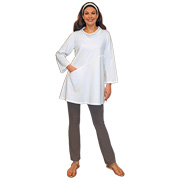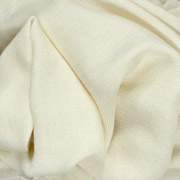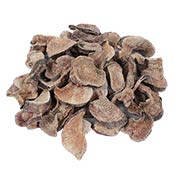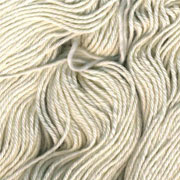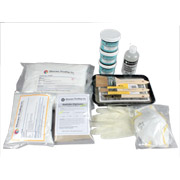SolarFast dyes are used to create photograms, continuous tone photographs, shadow prints, and ombrès on fabric and paper.
SolarFast is also great for painting, tie dyeing, screen printing, stamping, batik and more!
BASIC INSTRUCTIONS.
- Apply SolarFast to fabric or paper
- Place and secure image
- Expose to sunlight (or UV)
- Wash… and you’re done—admire your print!
APPLYING THE DYE
Apply SolarFast with a brush, sponge or brayer.
- For hard edges, use masking tape to create a window the size of your image. SolarFast is just thick enough to prevent bleeding—it will not creep under your masked areas, and it can be applied through a stencil. Remove tape before exposing.
- For brushed edges, simply brush out the dye beyond the frame of your print.
- An even coating of dye will produce the best prints. SolarFast™ prints must be made while the dye is still wet, but you do not want to over saturate the substrate. If the fabric is TOO wet during exposure, condensation may form underneath the negative, which can interfere with development. To avoid over-wetting, blot absorbent fabric or paper with a paper towel or rag. Conversely, prints made with dry media will not produce the optimum depth of shade.
- If printing on paper, make sure to use heavy artist papers like Arches or Reeves. Apply an even coat. Irregularities in the coating will produce irregularities in the resulting print.
- When printing on T-shirts or garments, be sure to place a piece of paper or board between the layers of fabric to avoid bleed though while applying the dye.
- SolarFast may also be applied through a spray bottle or airbrush (thin first with water), or through a silk screen(thicken first, using the SolarFast Thickener).
CREATING AN IMAGE
SolarFast may be used on its own as a paint, ink or dye for applications such as batik, silk painting, screen printing and tie dyeing. It may also be used to create photograms, shadow prints and sun prints. Photographic SolarFast prints can be made using a film negative.
- To create a photogram place any object on the coated substrate prior to exposure. Anything that casts a shadow will produce an image. Flat objects work best. Flat and thin objects, such as leaves or keys, may be held in place with a piece of glass.
- To create permanent photographic prints on paper or fabric, use a film negative. Negatives may be printed on transparent film though a Xerox machine, laser printer or inkjet printer. For inkjet printing, we recommend using SolarFast Film, which is moisture resistant and specially coated to make the best negatives. Traditional film negatives will also work well, as long as they are adequately dense.
Higher contrast images work best, and high density is key: the blackest areas of a negative should be completely opaque, and the lightest areas transparent. - Layer two negatives for extra contrast or if your printer outputs less ink. Carefully register the two films and use tape or glass to keep them in place.
Place the negative waterproof side down (or print side up) on your coated fabric or paper. Use a piece of glass or acrylic to hold the negative in place and keep it flush with the substrate. You may also pin or tape down your negative, but the negative MUST BE FLUSH with the substrate for a good print. If it is not, you may lose detail in the resulting print.
EXPOSING YOUR PRINT
Expose your coated paper or fabric to sunlight, as directed on the SolarFast label.
- The best time to make SolarFast prints in the middle of the day, when the sun is directly overhead. Use direct sunlight whenever possible. Prints made later or earlier in the day or on cloudy or overcast days will require longer exposure times.
You can almost always make a good print during the day (11am-3pm); it is just a matter of figuring out how much time is required for present conditions. - For best results, perform a wedge test using the downloadable negative. Remember, if you’re negative is adequately dense (if the darkest areas are truly opaque), it is preferable to overexpose your print rather than underexpose it. You can also watch the color appear, which will give you some indication of the exposure’s progress.
- Keep in mind the final result will not be revealed until after you have washed the print.
SolarFast develops in the presence of UV light. You may use artificial light to make an exposure, but the time required will depend on the UV output of the bulb. Do a test first to determine the appropriate exposure time.
WASHING
After exposing, you must remove the undeveloped dye by washing. Use SolarFast Wash for best results. Color development is not complete until after washing. White areas of the print will also become whiter with washing.
- Bring the print inside (away from light source) before removing the negative. (You may also store your print in a dark, cool place between exposure and washing, if necessary.
- Machine washing is recommended for textiles. Use SolarFast Wash (3-4 capfuls or 24ml) and the hottest possible cycle.
- For hand washing paper or fabric, submerge in the hottest tap water possible, add SolarFast Wash (1-2 capfuls or 10ml), and keep the water flowing for at least 10 minutes.
For a comprehensive list of frequently asked questions and some spot on trouble shooting check out Jacquard's FAQ and Trouble Shooting document!




